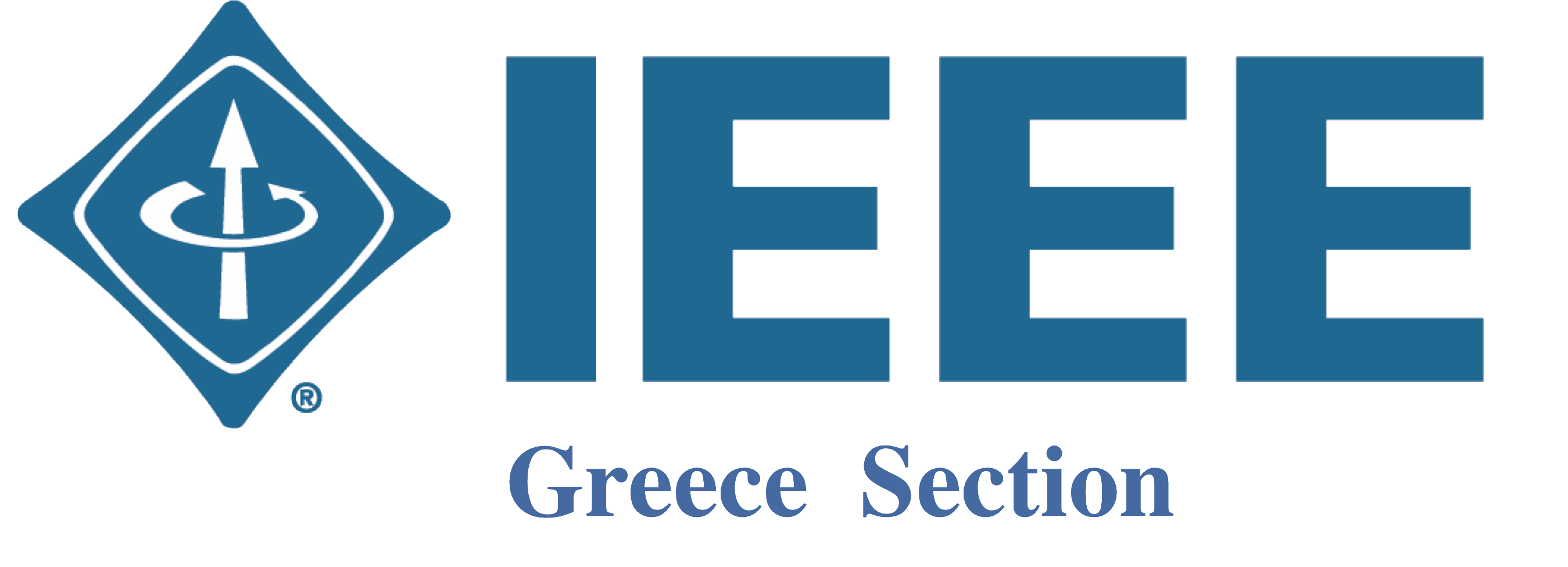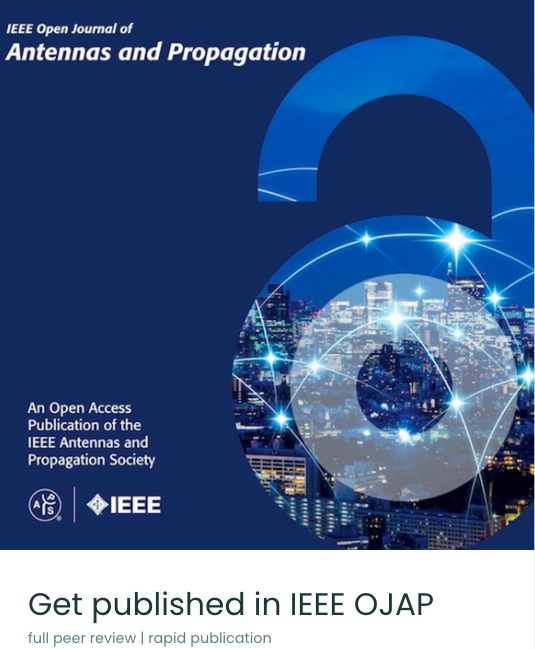Workshops and Special Sessions
Workshop on Technology and Instrumentation for Particle Physics
The workshop provides the opportunity to present and get informed on cross-disciplinary topics related to technologies and instrumentation for Particle and Astroparticle Physics research
Dr. Kostas Kloukinas, CERN, Switzerland
Prof. Theodoros Alexopoulos, National Technical University of Athens, Greece
Prof. Katerina Zachariadou, University of West Attica, Greece
----------------------------------------
Special Session on Machine Learning Applications in Communications and Electronics
Machine learning (ML), artificial intelligence (AI) and its learning, adaption paradigms are providing an effective solution in engineering applications. ML can adapt to new conditions and to detect and estimate patterns. Machine learning (ML) has gained recent and well-deserved attention in many fields of engineering and science mostly due to the development of high-performance graphical-processing units (GPU) as well as development of deep neural networks (DNN) based algorithms. Several leading technology companies are heavily investing in AI/ML and academia is following suit to develop more powerful algorithms that utilize the new hardware. In addition to these new developments, practitioners have found new ways to utilize the many existing machine learning algorithms in their respective domains. The fields of wireless communications, electromagnetics (EM), antennas and electronics also benefit in a variety of ways from application of machine learning, deep learning and artificial intelligence. Several applications of ML to communications and electronics already exist. These, among others, evolutionary algorithms (EAs), Decision Trees, Random Forests, Support Vector Machines, Nearest Neighbors, Extreme Learning Machines, Gaussian Processes, Artificial Neural Networks (ANNs), Ensemble learning methods, and Deep Learning Networks (DNNs). The use of all of the above has an increasing impact to key enabling technologies for wireless communications, antenna design, propagation modeling and electronics. Additionally, hybrid combinations of ML techniques and other methods are also emerging. The aim of this special session is to use the ML computing paradigm to bring more awareness on applicability to the communications and electronics domain.
Potential topics include but are not limited to the following:
• Machine learning techniques for wireless communications
• Machine learning techniques for propagation modeling
• Machine learning techniques for antenna design
• Machine learning techniques for other EM problems
• Machine learning techniques for 5G Networks and beyond
• Machine learning techniques for VLSI design
• Machine Learning techniques for signal processing
• Machine Learning techniques for leakage detection problems
• Machine Learning techniques for wired and wireless network
• ML techniques for biomedical applications and wireless monitoring
• Surrogate models for antenna design problems
• Other innovative ML techniques
Special Session Organizers:
Prof. Sotirios K. Goudos,
ELEDIA@AUTH, Department of Physics
Aristotle University of Thessaloniki, Greece
(e-mail: This email address is being protected from spambots. You need JavaScript enabled to view it.)
Prof. Marco Salucci,
ELEDIA Research Center (ELEDIA@UniTN - University of Trento)
DICAM - Department of Civil, Environmental, and Mechanical Engineering
University of Trento, Italy
(e-mail: This email address is being protected from spambots. You need JavaScript enabled to view it.)
Prof. Panagiotis Sarigiannidis,
Department of Electrical & Computer Engineering
University of Western Macedonia, Greece
(e-mail: This email address is being protected from spambots. You need JavaScript enabled to view it.)
Prof. Shaohua Wan,
School of Information and Safety Engineering,
Zhongnan University of Economics and Law, China
(e-mail: This email address is being protected from spambots. You need JavaScript enabled to view it.)
Special Session on
Novel Theoretical and Practical Developments in Memristor Device, Circuit, and System Research
Organizers:
Dr. Alon Ascoli, and prof. Ronald Tetzlaff
Affiliation: Chair of Fundamentals of Electrical Engineering, Technische Universität Dresden, Dresden, Germany
Abstract: Novel exciting opportunities have been recently opening up in the Device, Circuit, and System community with the advent of the disruptive memristive nanotechnologies. These nanotechnologies enable a paradigm shift from the conventional approach to data management. It is expected that memristors shall enable the development of electronic hardware with improved performance over state-of-the-art computing machines. One of the most intriguing properties of memristors is their unique capability to combine multiple functionalities within a nanoscale physical volume. In fact, resistance switching memories from the non-volatile class can be alternatively employed to sense, store, or even process information, enabling the hardware realization of innovative area-, time-, and energy-efficient information management paradigms, including in-memory-sensing and in-memory-computing, which are not implementable in CMOS technology nowadays. Non-volatile memristors can be re-programmed at significantly high rates as many times as conventional high-performance memories, requiring very little power to switch between distinct states, and may retain the information, stored as resistance, under power-off conditions, for a practically-infinite time. Moreover, arranged densely in crossbar configuration on top of underlying circuitry, by exploiting the metal-insulator-metal layers available along the third dimension in standard CMOS fabrication processes, they enable to use the allowable integrated circuit area efficiently, endowing the resulting technical systems with add-on functionalities without the need to shrink transistor dimensions any longer. Some resistance switching memories from the volatile class have also attracted much interest for their peculiar capability to act sources of local energy upon appropriate bias conditions, similarly as the potassium and sodium ion channels in biological neurons. The adoption of nano-devices of this kind in electronic circuit design may pave the way toward the synthesis of cellular arrays, mimicking closely the neuronal networks, as well as to the production of ground-breaking computing machines, e.g. spike-based computing cellular automata, which, operating according to bio-inspired principles, promise to approach the information management efficiency of the human brain. In summary, the memristors may allow design engineers to foster sustainable growth in integrated circuit performance beyond the Moore era. However, major challenges still await the Device, Circuit, and System community, from the optimization of their fabrication process, to the acquirement of a deeper understanding of the physical mechanisms, underlying their inherently-nonlinear dynamics, from the development of predictive compact models, amenable to numerically-stable numerical simulation, to the conception of systematic methodologies to robust circuit design. The special session, which A. Ascoli and R. Tetzlaff intend to propose at IEEE MOCAST2023, shall host high-quality oral talks from an assorted selection of outstanding memristor scientists, which will present their most recent achievements in fields of interest to this multi-disciplinary area of research, ranging from material science, to device physics, from circuit and system theory, to electronics, from computer architecture to neuromorphic engineering. The goals of the proposed special session are to bring together scientists from different academic backgrounds, to share knowledge within the Device, Circuit, and System community, and to contribute to the academic formation of early-career memristor researchers, providing them with a thorough overview of the latest developments, open questions, and future directions in the field
Special Session on
Complementary aspects of Artificial Intelligence, Unmanned Aerial Vehicles, and Future Wireless Networks
Artificial intelligence (AI) has the potential to revolutionize many fields, including the operation and management of unmanned aerial vehicles (UAVs). With AI, UAVs can be equipped with intelligent decision-making capabilities, allowing them to adapt to changing environments and make autonomous decisions. This can improve their efficiency and reliability, as well as reduce the workload on human operators. In addition, the use of AI in UAVs can facilitate the development of new applications, such as autonomous search and rescue missions or precision agriculture. In the future, the integration of AI with next-generation wireless networks, such as 5G and beyond, could further enhance the capabilities of UAVs. These networks will provide higher data rates, lower latencies, and greater reliability, enabling UAVs to process and transmit large amounts of data in real-time, enabling new levels of autonomy and intelligence. Overall, the complementary aspects of AI, UAVs, and future wireless networks (FWNs) hold great promise for a wide range of applications and industries.
Potential topics include but are not limited to the following:
- Machine learning algorithms for autonomous flight control in UAVs
- Development of intelligent sensor networks for UAVs
- Use of UAVs for wireless network infrastructure deployment and maintenance
- Integration of virtual and augmented reality technologies in UAV control and navigation
- Predictive analytics for UAV fleet management and optimization
- Real-time video analytics for emergency response using UAVs
- Cybersecurity challenges in UAV-based FWNs
- Energy-efficient communication protocols for UAVs
- Antenna design/optimization for UAV-based FWNs
- Reconfigurable antennas and metasurfaces in FWNs
- Propagation modeling and measurements in UAV-based FWNs
- Business models for AI-based and UAV-based FWNs
- AI-based and blockchain-based spectrum sharing in FWNs
- AI-based simultaneous localisation and mapping in FWNs
- AI-based beamforming and direction-of-arrival estimation in FWNs
- AI-based quality of experience for FWNs
Special session organizer
Dr. Zaharias Zaharis,
Chair of Electron Devices/Microwave Theory and Techniques/Antennas and Propagation Joint Chapter, IEEE Greece Section
School of Electrical and Computer Engineering
Aristotle University of Thessaloniki, Greece
(e-mail: This email address is being protected from spambots. You need JavaScript enabled to view it.)








